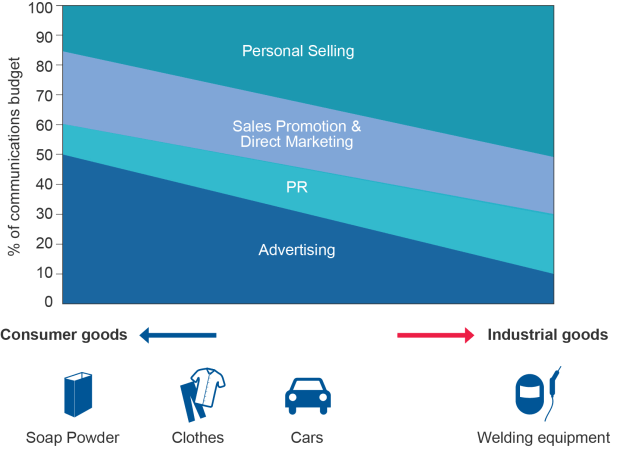Promotion forms an important part of any marketer’s remit, but are you embracing new promotional opportunities and finding the optimum promotional mix? One in four b2b companies believe that promotional research would be useful.

Developing a promotional strategy
New customers are the lifeblood of a company. They bring revenue and importantly they bring repeat custom. Winning new business requires a willingness to invest in promotion. In the not too distant past this was an expensive but not so complicated task. The choice of promotional tools was relatively limited for business-to-business companies; restricted to entries in directories, adverts in journals, direct mail, PR, and the odd exhibition. The biggest marketing cost for most business-to-business companies has nearly always been in their sales forces.

Traditional media may still be relevant today but there is a host of new alternatives. Websites are an obvious window display for a company and yet many business-to-business companies lament their websites, grumbling that it “needs a major overhaul”. A company’s website is its shop front and is often the source of most enquiries. The website can make a small company look bigger. It can stretch the geographical boundaries of the customer base to almost anywhere in the world. For just a few thousand dollars the website allows a company to present its story, its product range, its support services, and all its contact details. Many companies take it a step further and orders can be placed, tracked and paid for online. A website is a perfect vehicle for scaling up a company and there are no excuses for under investment.
Not only should the website receive regular investment, money should also be spent on search engine optimization (SEO). SEO must be an important part of every company’s promotional strategy to ensure that it is featured high on any browser search.
Other new media promotions include banners on websites that are visited by potential customers. Ads can be designed so that as a potential customer is surfing the net, up pops an ad from the company whose website has been previously visited. In this new media world is it now easy to obtain analytics to see how many people are viewing the ads and so obtain some understanding of how they are working.
Traditional methods of promotion still play an important role in business-to-business marketing. The starting point with any ad is to be clear as to who is being targeted and what the message should be. Thereafter consideration should be given to the aims of the promotion – is it to build brand awareness, alert people to new products, communicate the USP of the products or to get customers to pick up the phone and take action?
A typical business-to-business promotional campaign may have a budget of just a few thousand pounds. Brand building campaigns for large corporates may run into many millions of dollars but for most product support, a $100,000 budget may be considered a significant investment. This sum is not going to go far if it is spread over a couple of exhibitions and a few monthly insertions in trade journals. Still the most popular business-to-business promotional campaigns are run on traditional lines such as:
-
Adverts in trade journals. These promotions build awareness and reach decision makers in vertical markets. They seldom drive immediate sales. The proportion of people who see the adverts and find them interesting, compelling and relevant, may be relatively few. This means that adverts in journals can be an expensive luxury for business-to-business marketers.
-
Direct marketing. Direct mail is a wonderful medium for business-to-business marketers as it is fired directly to the heart of decision makers. Most business-to-business companies address relatively small numbers of people and many of these can be reached from databases that have been built up over time. In the past, direct marketing was expensive and through the post. Today emailers can be highly effective and cost significantly less.
-
Public relations. Business-to-business marketers have always been strong advocates of PR. PR is a means of telling a story that gets captured by the press (or nowadays on blogs) and which can reach the parts that other promotions cannot reach. A good story promoted in this way can have high impact because it is seen as more independent than a paid for promotion. However, it is difficult to control what gets printed and where. This said, almost all business-to-business marketers usually have some PR in their promotional strategy.
-
Exhibitions. Exhibitions are another important and traditional communication tool for business-to-business marketers though they are expensive in terms of the stand and the staffing required during the event. They provide an opportunity for a company to meet its customers and potential customers face-to-face. Furthermore, it is possible to judge the impact of an exhibition from the footfall of visitors and, in some cases, the placing of orders and enquiries on the stand.
To learn more about this topic, please visit the following publication:
Business Promotions & B2B Advertising

